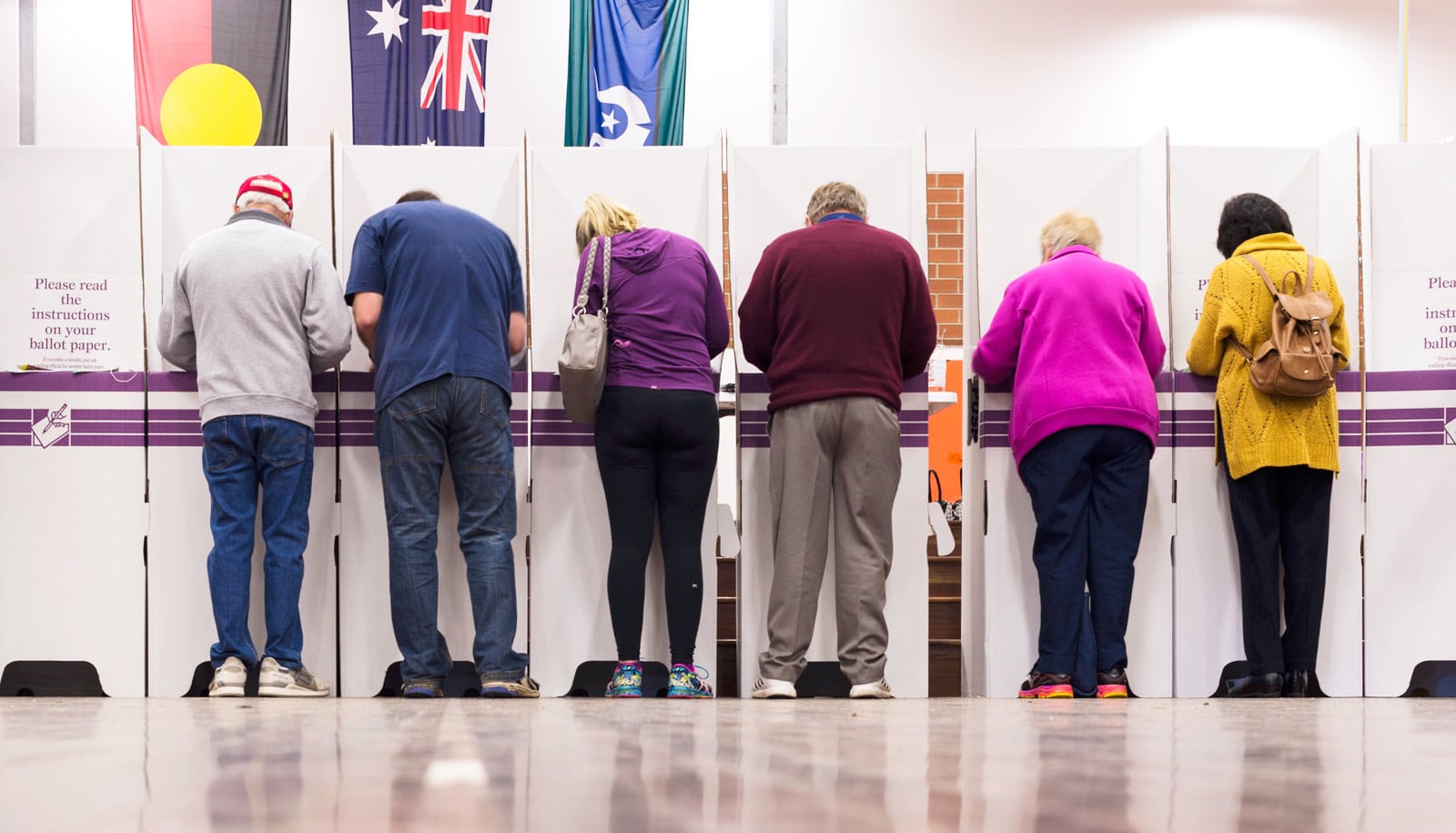Elections play a distinctive role in strengthening democracy, and voting is a pivotal part of that process. That’s why new research makes the case for universal participation through mandatory voting.
Despite an increase in voter turnout during the 2018 United States midterm election, about half of all eligible voters didn’t cast their ballot on election day.
To increase voter turnout in elections, some scholars have suggested making voting compulsory in the United States. The US would then join countries such as Australia, Belgium, and Brazil, which all require universal participation in national elections.
In an article published in the American Journal of Political Science, author Emilee Chapman, a political scientist at Stanford University, builds on existing scholarship to make the case for mandatory voting. She sees voting as a special occasion for all citizens to show to elected officials they are all equal when it comes to government decision-making.
Voting is for everybody
“The idea of compulsory voting is that it conveys the idea that each person’s voice is expected and valued,” says Chapman. “It really offers this society-wide message: There is no such thing as a political class in a democracy. Voting is something that is for everybody, including and especially people at the margins of society.”
If everyone votes, it reminds public officials they are accountable to all citizens—not just the most vocal and active, says Chapman.
“The idea of compulsory voting is that it conveys the idea that each person’s voice is expected and valued.”
There are many opportunities other than voting for civic engagement: Citizens can petition representatives, donate money to a campaign, or even stand for office themselves, Chapman says. But mandatory voting is the simplest way to ensure everyone engages in political decisions, she says.
“When you have these moments where people know that they will be called upon to participate as citizens, it helps reduce the friction that comes with trying to figure out how to navigate what their role as a citizen is—especially given how complicated government is and the many ways to influence policy,” says Chapman. “I think it’s often very hard for people to figure out how to make their voice heard effectively.”
Look to Australia?
With such tight midterm races across the US, the motivation to vote was high and a sense of civic duty was strong. But if voting was required, some skeptics worry that citizens would no longer vote for these intrinsic reasons but instead vote out of a fear of being punished.
To address this concern, Chapman points to Australia, a country that has had compulsory voting in their national elections since 1924. According to one survey Chapman referenced in the paper, 87 percent of Australians said they would “probably” or “definitely” still vote if it was not required.
What explains Australians’ desire to still vote, with or without the law? Chapman says the government is able to offset any fear of retribution by taking a soft approach to disciplining nonvoters. This, she says, maintains a positive perception to voting.
“Australia is one of the most effectively enforced compulsory voting systems in the world, but even there, excuses for nonvoting are readily granted and many cases of unexcused abstention are not pursued,” says Chapman in the paper, noting that only about one in four Australian nonvoters actually pay a fine.
“Given the low enforcement rate, it seems likely that Australia has achieved its high participation rates because people in Australia see the law as reflecting a moral duty to vote. People are not obeying just because they fear they will be punished,” she says.
Not a ‘one-stop solution’
Some critics of mandatory voting argue that it would introduce uninformed voters into the electorate, which they say would result in election outcomes not representative of public opinion. But according to Chapman, the evidence supporting this claim is ambiguous.
In addition, there are other challenges that may arise when only people who are interested in politics vote, she says.
“If you allow the electorate to restrict itself to only people who are already interested in politics on its own and ask them for their input, then you are only going to have people who already have a lot of power in society and are familiar with what using that power can do for them,” Chapman says. Officials have an incentive to prioritize the concerns of likely voters over non-voters, she says. “And as a result, you are going to see a real difference in what interests are represented in public.”
Other critics have also argued that forcing citizens to vote restricts civil liberties: People should decide for themselves how they want to exercise their citizenship rights. In other words, the right to vote is also the right not to vote.
“The right to vote is based on the idea that we need to make public decisions together,” says Chapman. “I think there is a tendency to construe voting as a form of expression as opposed to participation in a collective decision. Those are very different acts.”
Once those two ideas are disentangled, Chapman says there are ways to structure a system that would not violate civil liberties raised by critics. For example, there could be religious exemptions, formal abstentions, or an option to simply select “none of the above” for voters who do not like any of the candidates.
But as Chapman cautions, compulsory voting should not be seen as a one-stop solution to solving problems in democracy. And she is realistic about hurdles to any implementation. For example, there would need to be a secure system that would keep voter rolls up-to-date and registration would need to be streamlined.
There are also material barriers that prevent certain populations from voting. For example, the homeless often cannot meet residency requirements needed to vote. These obstacles exist whether voting is mandatory or not, says Chapman.
“Democratic reform is something we should really maintain as an important value for democracy and not just think that opportunity alone is enough when it comes to voting,” she says.
Source: Stanford University



